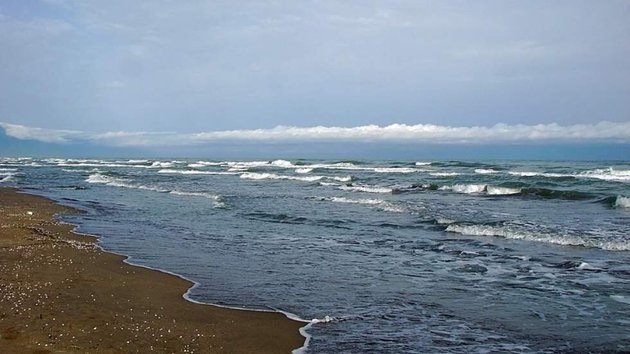While we celebrate the National Day of the Caspian Sea each year, the precious water body is still struggling with environmental issues such as oil pollutants, sewage, and the leakage of petroleum products from the littoral countries, Tehran Times reports.
Caspian Sea Day is held annually on August 12, aiming to raise awareness about the environmental ramifications of human interference with this valuable ecosystem. The day marks the Framework Convention, also called the Tehran Convention, signed by the official representatives of the five littoral Caspian states namely Azerbaijan, Iran, Kazakhstan, Russian Federation, and Turkmenistan in Tehran on November 4, 2003.
The Caspian Sea is the largest enclosed inland body of water on Earth by area. It is bounded by Kazakhstan to the northeast, Russia to the northwest, Azerbaijan to the west, Iran to the south, and Turkmenistan to the southeast. The sea has an area of 600,384 square kilometers and a coastline of 7,000 kilometers.
Hosting 400 aquatic species and holding third place in terms of oil and gas reserves under its bed after the “Persian Gulf” and “Siberia” has doubled the value of this basin, while sturgeon are the most important inhabitants of the lake. Researchers believe that 80 percent of the pollution in the Caspian Sea is related to the flow of water from the Volga River and other western rivers from the Republic of Azerbaijan.
Frequent oil spills in the coastal areas of Azerbaijan and Kazakhstan, the entry of waste of over 40 factories and refineries into the sea, the decline, and extinction of the Caspian Sea aquatic species since 1990, are among the main challenges faced by the Caspian Sea.
The National Institute for Oceanography and Atmospheric Science has conducted extensive studies in this catchment area, including more than 10 research patrols in the Caspian Sea, obtaining a certificate and setting up a trusted laboratory of the Department of Environment, identification of high-risk points for cracking waves on the shores of the Sea.
Moreover, sampling of bed sediments in the deep waters of the southern Caspian Basin, publication of more than 80 scientific documents on the Caspian Sea, study, measurement, and modeling in Gorgan Bay and presented scientific and executive solutions for the sustainability of its ecosystem and more than 70 research projects in the southern part of the Caspian Sea are other actions of researchers at the Research Institute.
Grappling with poor waste management
Ahmad Reza Lahijanzadeh, deputy chief of the Department of Environment (DOE) for the marine environment, said in August 2020 that waste management in the Caspian Sea is on the verge of crisis and seriously threatens the Sea’s environment. In addition to waste, leachate enters the sea through rivers or rainfall, and because the severity of leachate pollution is very high, it imposes a serious threat to the marine environment, he lamented.
Noting that the release of urban and rural wastewater into the sea is another problem the Caspian Sea is struggling with, he clarified that a number of cities in the northern provinces either do not have a wastewater treatment plant.
Stating that plastics and microplastics are among the issues that can be a threat to humanity in the next 10 years, he noted that erosion makes microplastics out of plastic waste, and 70 percent of these are transferred directly to the seas, and therefore can enter the aquatic and human food cycle, causing damage to human health and marine biodiversity.
Caspian Sea to be smaller in future
During the last 25 years, the water level of the Caspian Sea has decreased by 130 cm, he said, noting that whether this decline will stop in the future is a matter of controversy, but given climate change and rising water consumption from the Volga River, the main source of water for the Caspian Sea, many believe that the water level will continue shrinking and the Caspian Sea will be smaller in the future. The Caspian Sea water level has reached its lowest level since 1995, mainly because of a recent drop in the water level of the Volga River, which supplies most of the sea’s water, by about 22 percent. In 2019, the average water level stood at -27.18 meters, showing 13 centimeters decrease compared to the year before.
According to the national center for the Caspian Sea studies and research affiliated to the Water Research Institute, seawater temperature is one of the main criteria in heat exchange and an indicator in assessing the potential for evaporation from the water level, which is one of the main components of the Caspian water balance. The increasing trend of the Caspian Sea surface temperature, especially in recent years, has been one of the factors affecting the reduction of water level.






